How the West Was Conquered!
2013
I have always been embarrassed to admit I had never made it past the Rockies to the west coat, never seen Vancouver. This Alaska cruise was the perfect opportunity.
We arrived a few days early to have some time to visit Vancouver and the area. Our visit although short was very pleasant.
Stanley Park is a huge and beautiful landmark dotted with totems and beautiful trees.
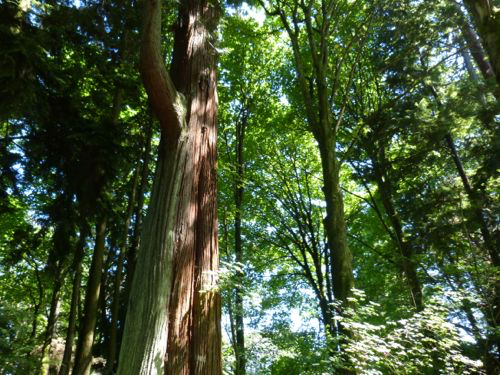
The totem was the British Columbia “Indian’s” coat of arms. They were carved from western red cedar and each carving tells of a real or mythical event. They were not idols nor were they worshipped.
The park also offers beautiful views of Vancouver.
We took a day to sail over to Victoria, to visit Butchart gardens.
This has got to be the biggest most spectacular botanical garden I have ever seen.
It got started in 1906 by Mrs. Jennie Butchart to fill up an exhausted quarry pit near their house and it grew and grew under her hand and later under her children and grandchildren’s direction. Nowadays, over a million bedding plants in some 900 varieties bloom from March through October.
We also got to spend a bit of time in Victoria itself. I was amused to see the “MILE 0” sign. It reminded me of a similar sign for a different road in Key West.
We went to the Empress Hotel in the hopes of trying their famous afternoon tea…but at $65.00 a pop we decided to skip it…
Back to Vancouver to board our cruise ship, Holland America’s Zuiderdam.
We were trying out a “new” itinerary, which includes the Yukon. This is a novelty because it was not usually part of Alaskan voyages. It is an interesting addition especially for people whose ancestors may have been involved in the Klondike gold rush. The downside is that, because of this added land portion, we did not get to see the glacier fields, which is one of the highlights of an Alaska cruise. But we got so see some amazing things nonetheless and covered a lot of ground visiting British Columbia and the Yukon in Canada and Alaska in the USA.
Heading for the Inside Passage
We see the first snow capped mountains
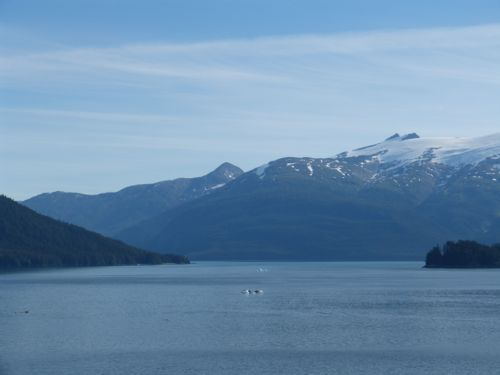
And our first signs of icebergs!!!
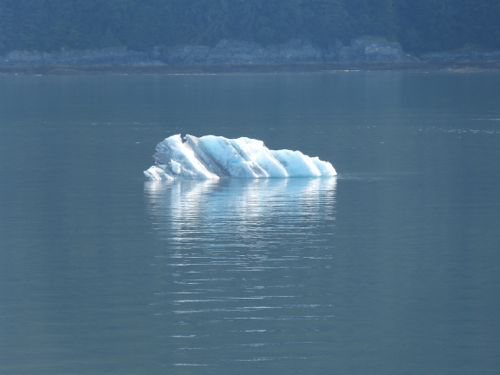
The colors are ever changing… as we unknowingly cross the border into the US
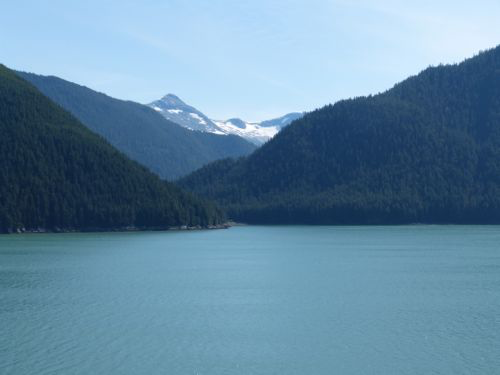
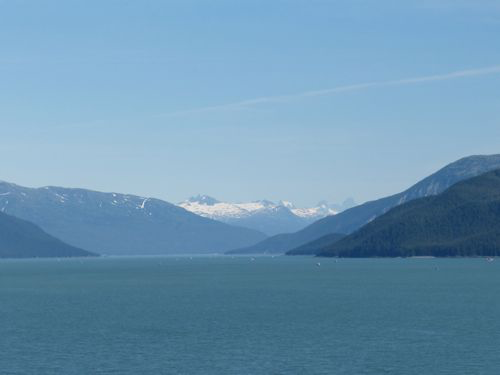
First stop: Juneau, Alaska!
We choose an excursion into the Tongass National Forest. It is said to be the largest national forest in the USA at 17 million acres (69,000 km2).
We started with a walk in the woods.
It was interesting to see the markings of where the glacier had been through the years.
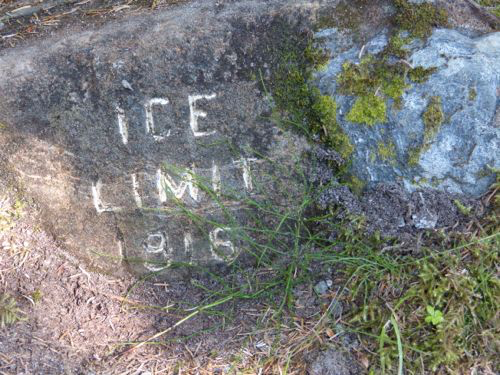
There are many streams left over from the passage of the glacier, allowing salmon to swim up, some of them for their last voyage, which explains their reddish color.
Suddenly, we came to a clearing that opened up to the Mendenhall glacier. It is a huge mass of ice (about 12 miles (19 km) long) and the compression is what makes it look blue.
The second part of this excursion was whale watching. This was without a doubt the most exciting part of the trip for me. The whales we saw are humpback whales. One of the larger rorqual species, the adults range in length from 12–16 metres (39–52 ft.) and weigh approximately 36,000 kilograms (79,000 lb.). The humpback has a distinctive body shape, with unusually long pectoral fins and a knobbly head. An acrobatic animal known for breaching and slapping the water with its tail and pectorals. Males produce a complex song lasting 10 to 20 minutes, which they repeat for hours at a time. There were a lot of them!!
Unfortunately my photo technique is not quite what it needed to be to make memorable shots.
Having said that I must recount an amazing phenomenon that we got to witness first hand. Our guide called it bubble net feeding.
“A group of whales swims in a shrinking circle blowing bubbles below a school of prey. The shrinking ring of bubbles encircles the school and confines it in an ever-smaller cylinder. This ring can begin at up to 30 metres (98 ft.) in diameter and involve the cooperation of a dozen animals. Some whales blow the bubbles, some dive deeper to drive fish toward the surface, and others herd prey into the net by vocalizing. The whales then suddenly swim upward through the “net”, mouths agape, swallowing thousands of fish in one gulp. Plated grooves in the whale’s mouth allow the creature to easily drain all the water initially taken in.”
Our guide used an underwater microphone to pick up the vocalizing and thus knew when the wales were about to come up. Do I need to say it was SPECTACULAR to see all those huge whales coming up and out of the water at the same time?!!!!
Too soon it was time to go back to our ship en route for Skagway, (still in Alaska) where we will leave the ship to embark on a long land journey. The name Skagway is derived from sh?agéi, a Tlingit idiom which refers to rough seas in the Taiya Inlet, that are caused by strong north winds. Skagway is also part of the setting for Jack London’s book The Call of the Wild and for Joe Haldeman’s novel Guardian. A picturesque touristy port, the main street features wood sidewalks and stores that remind us of the gold rush days. It is the starting point for the White Pass and Yukon Route Railroad. The train ride on this narrow gauge railroad, which brings us back to the mining days, is the main attraction. Built in 1898 during the Klondike gold rush, the tracks climb 3 000 feet in 20 miles, and feature steep grades of up to 3.9% as well as cliff hanging curves of 16 degrees. It passes through and over 2 tunnels, several bridges and trestles.
After the train ride we switch to a bus…. and drive all the way into the Yukon.
We had an amazingly entertaining driver who managed to make this long ride exciting…even a stop at Carcross.
Need I comment on the scenery?
Just outside of town is a huge eagles’ nest with a couple of juveniles standing guard.
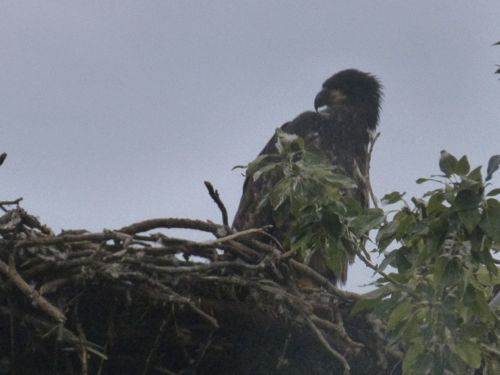
We stopped by an old log building called the Montague roadhouse, a staging post providing stables, storage, meals and accommodation, during the Klondike Gold Rush, but I was more interested by the flora that the history of the place…
We followed the Yukon River, which is not only a major migration corridor but was also the principal means of transportation during the Klondike Gold Rush.
We came across some local humour…
And interesting vegetation
During this long ride we heard a lot about the shooting of Dan McGrew and the cremation of Sam McGee, (http://www.poetryfoundation.org/poem/174348), but mostly their creator, the poet Robert Service (http://en.wikipedia.org/wiki/Robert_W._Service).
Finally we reach our goal! Dawson city! We are at the heart of the Klondike Gold Rush at the confluence of the Klondike River and the Yukon River.
We are quite far north if you just consider that this photo was taken at 10h55 PM!
The city is small but quaint, flowers have been planted everywhere
The waterfront is very well landscaped and allows us to see very clearly the joining of the two rivers.

There are a few tourist attractions such as the paddleboat ride,
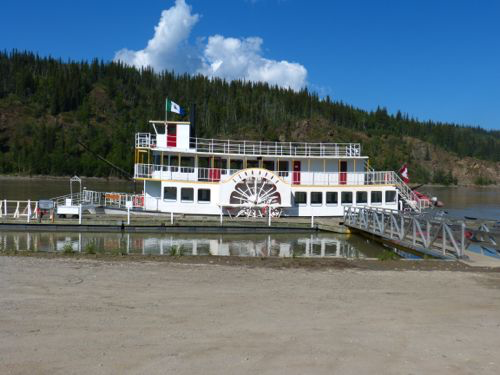
And a museum that recreates the life of the gold diggers.
There is also a newly built center devoted to the native culture
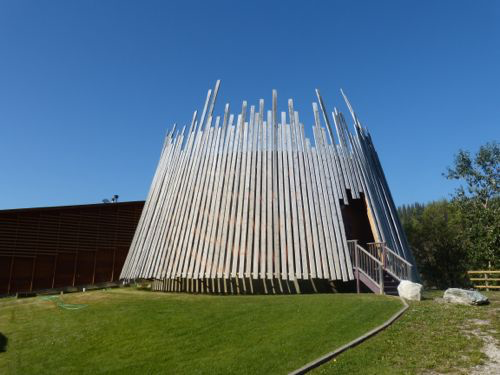
You can also visit Robert Service’s cabin.
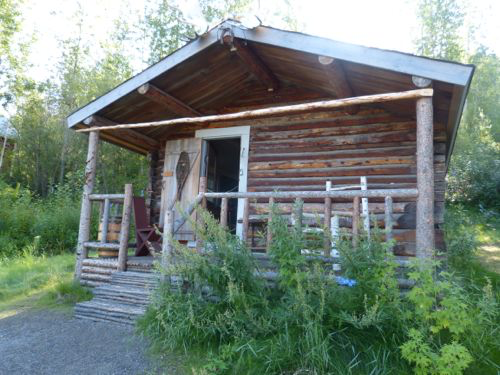
One of the more questionable activities is having a drink called the “Sour toe cocktail” at the local drinking hole. This is a drink that contains an actual alcohol preserved human toe. A little poem accompanies the ritual, as follows: “You can drink it fast, you can drink it slow. But the lips have got to touch the toe.” (I did not do it.)
And it was time to leave again, direction Fairbanks, Alaska! We arrived at the airport there to a whopping 100 F!! Apparently this is not uncommon. We had very little time to spend there but did take a walk along the river.
The next morning we boarded the famous McKinley Explorer train en route for Denali Park! These are the two story domed cars with panoramic views upstairs and a fine dining restaurant downstairs.
The scenery along the way is spectacular.
But arriving to the park was the ultimate goal! Denali National Park and Preserve is a national park and preserve located in Interior Alaska, centered on Denali (Mount McKinley), the highest mountain in North America. The park encompasses more than 6 million acres (24,500 km²). After a night’s rest in a lodge we set out on a school bus tour in the park.
The scenery was as breathtaking as the wildlife we were able to see.
Reindeer
Bears, first this lonesome one and then this mother and her cubs
This is not an area for flowers but this Columbine caught my attention:

The next day we chose to get up close and personal with Mount McKinley. The only way to do that is by plane (unless of course you are a climber).

We saw so many different landscapes in such a short time…
But the goal of the expedition was to see the top of Mount McKinley and we did!!

It seems that it is often wrapped in clouds and invisible, so we were lucky to catch it. It was an exciting ride as the pilot weaved his way around mountaintops and clouds but I did start feeling queasy near the end and was happy to get down.
Soon after it was time to board the train again, this time en route to Anchorage, Alaska.
More picturesque scenery along the way
We even rode through Sarah Palin’s town, Wasilla…but we never saw Russia…
We reached Anchorage, our last stop.
It is a lovely city with several references to the native culture.

We visited two museums: the Anchorage Museum impressed me a great deal. It is the state’s largest museum and includes an Alaska History Gallery, and the Smithsonian Arctic Studies Center. I found this second section, offering visitors a glimpse of the diverse culture of the Alaska Native peoples, absolutely phenomenal, both in content and presentation.
The other is the Alaska Native Heritage Center. It was more painful to watch the bad treatments the natives have endured through the years. But there was a very entertaining dance presentation that left you with some more positive feelings.
The one thing you cannot miss in Anchorage is the number of small airplanes. They are everywhere!! Almost like cars in other cities.
We resisted temptation when the time came to have a reindeer hot dog…
This is a very nice trip, especially for nature lovers and history buffs.
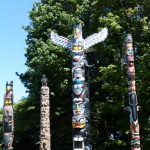
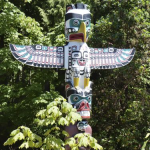
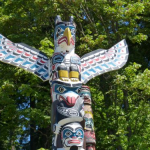
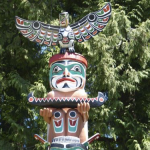
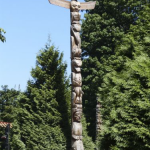
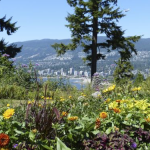
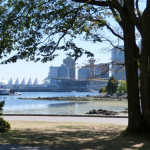
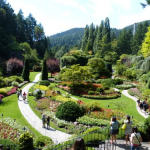
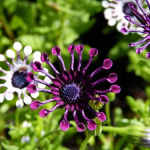
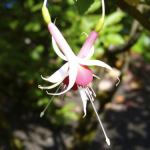
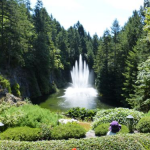
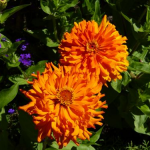
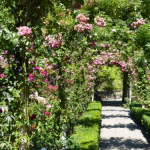
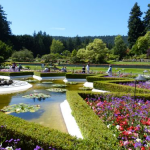
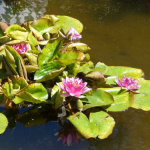
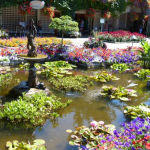
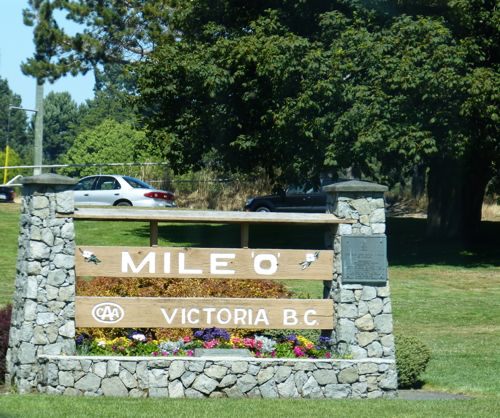
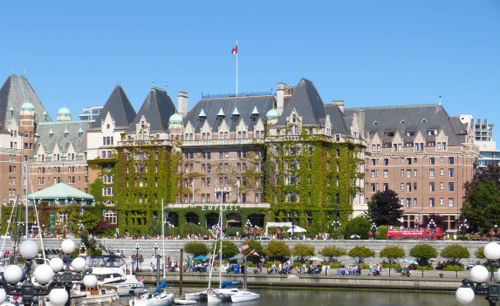
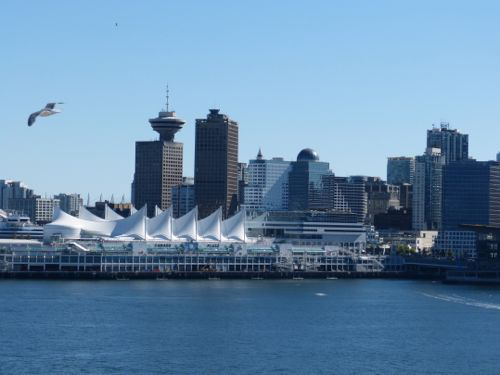
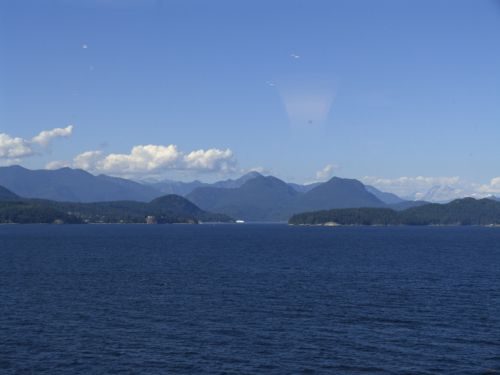
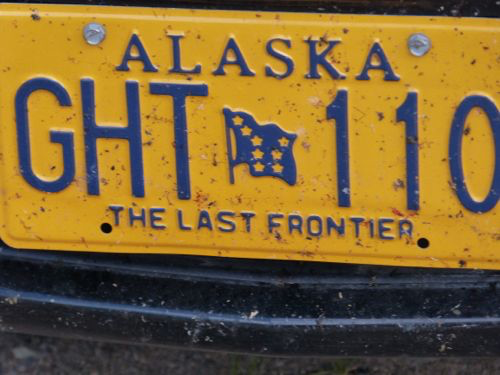
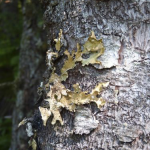
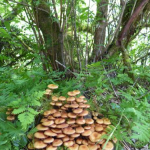
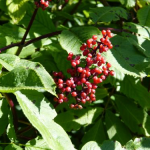
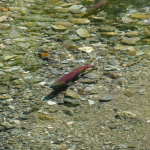
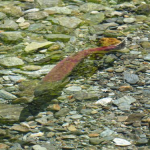
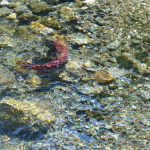
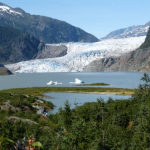
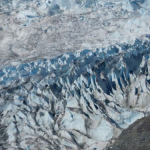
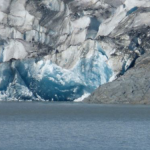
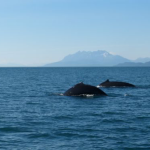
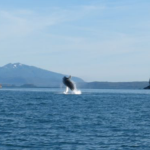
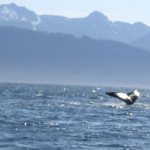
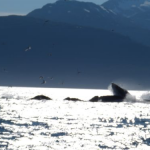
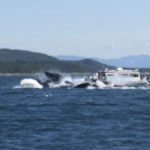
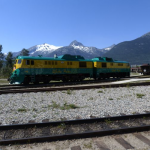
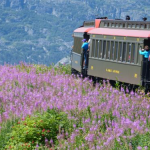
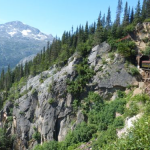
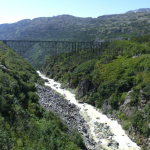
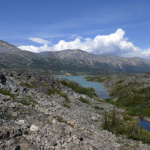
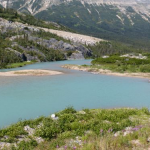

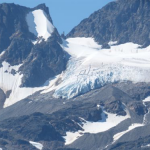
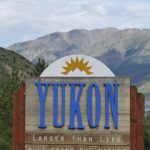
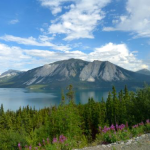
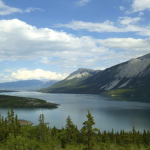
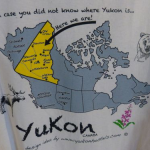
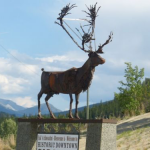
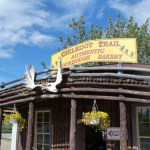
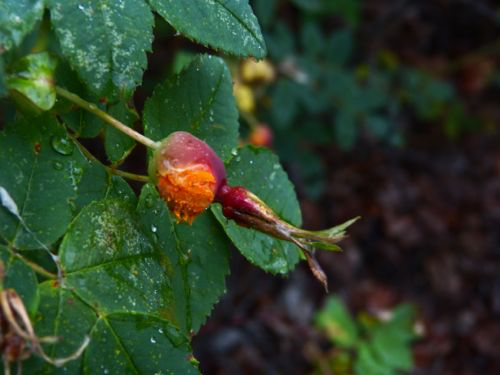
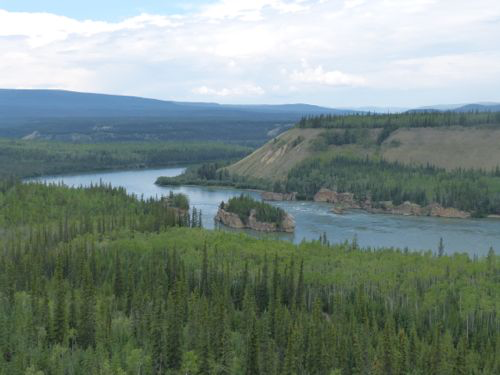
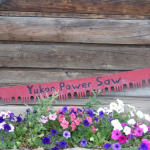
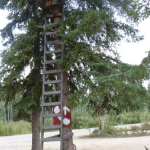
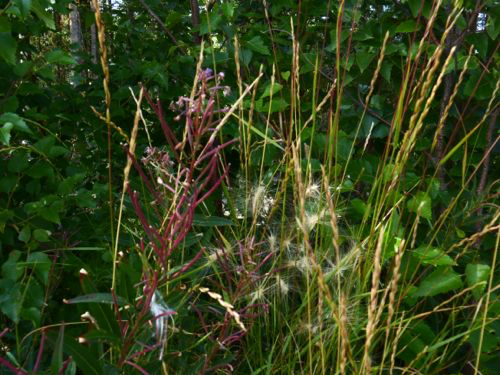
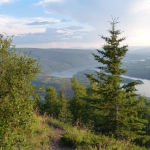
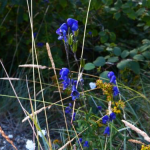
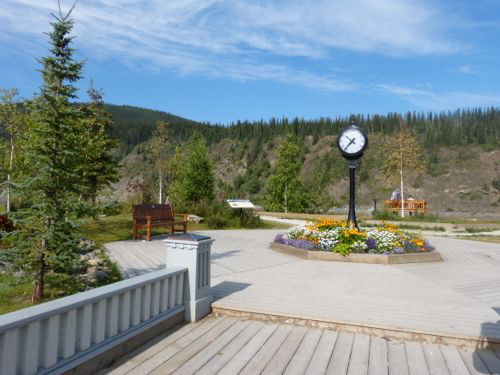
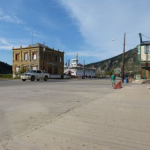
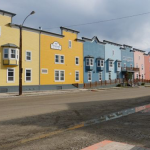
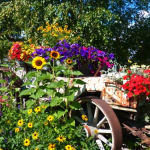
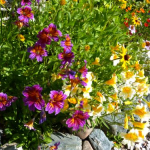

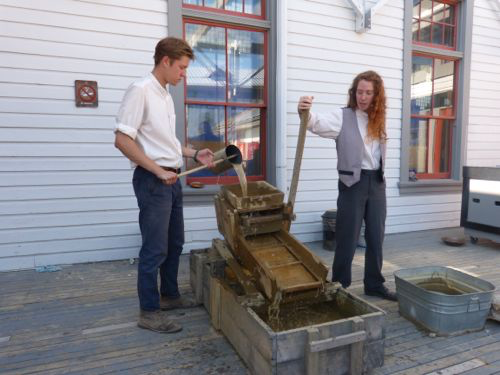
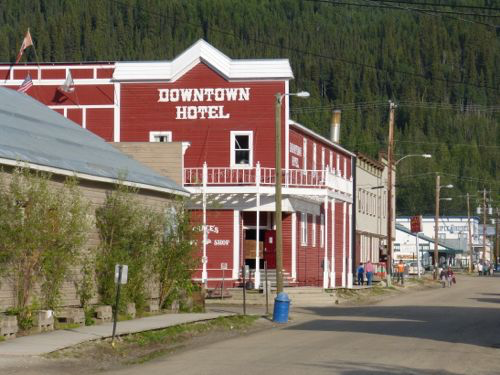
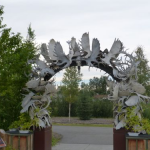
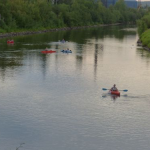
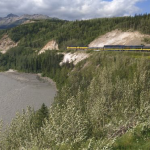
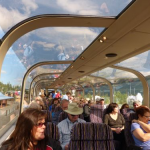
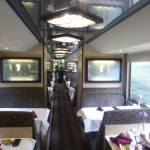
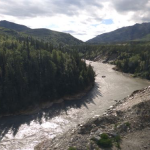
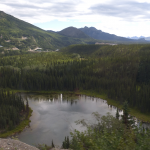



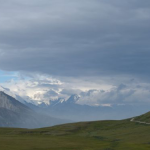
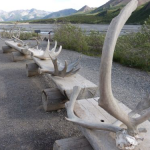
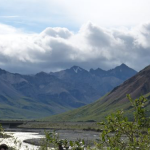
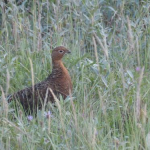

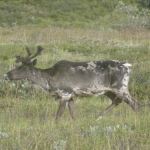
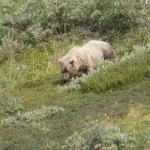
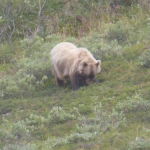
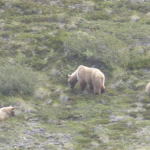
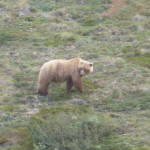

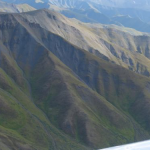
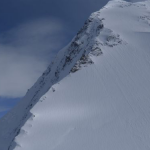
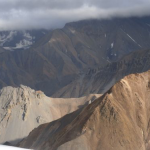
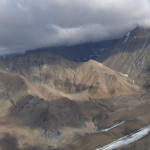
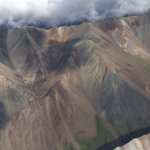
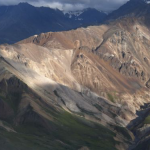
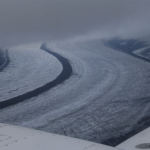
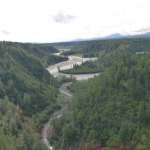
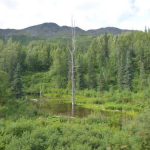

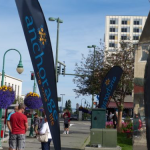
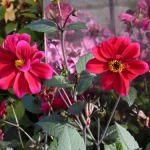

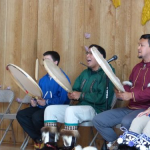


1 thoughts on “Alaska”